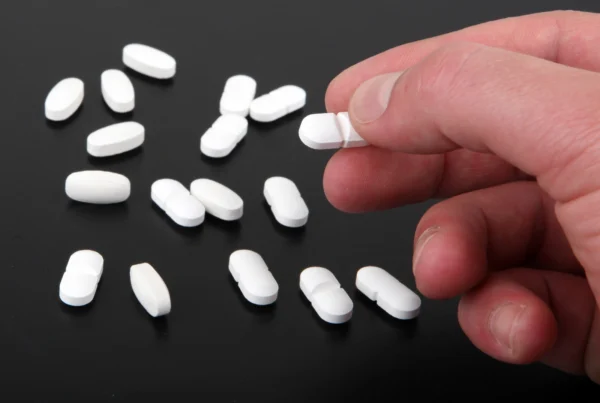
Table of Contents
Cocaine is one of the most famously abused drugs in the US, with the 80s being widely regarded as the peak cocaine decade. Since its discovery, it has seen a long and storied history of use and subsequent abuse. Even though it may not get the press and news coverage of other drug scourges like opioids and meth, it is still incredibly popular, common, and dangerous.
Cocaine is a stimulant and acts quickly and strongly on the central nervous system. Cocaine can build up a dependency in a relatively short time, and due to how it interacts with the nervous system, the dependency can become very strong. In some cases, the withdrawal symptoms can be serious enough that they are no longer simply uncomfortable or even painful. They become debilitating or even fatal. However, in most cases involving acute cocaine withdrawal, there is very little risk of serious complications.
Detoxing and recovery can often be made much easier through professional help. Often, this will include a medically supervised acute withdrawal phase in a comfortable facility so that the process can be completed easily.
Cocaine Withdrawal Symptoms
The symptoms of cocaine withdrawal will vary from user to user, with most users experiencing at least one or two symptoms. Some heavier users or those that have used for longer periods may experience a wider variety of symptoms, and they may be more intense as well, lasting longer. The severity of the symptoms will depend greatly on the individual’s usage history, medical condition, medical history, age, sex, and so on.
Within 72 hours of the last use, the user will enter the acute withdrawal state. This stage will include feelings of apathy or depression, combined with a lack of motivation to do anything.
This is a surprisingly difficult stage to complete since it makes the user feel the rest of the detox process will be useless and not worth any effort. Everything will also feel or be perceived as boring since there is no cocaine to modulate the pleasure center of their brain, which will also contribute to the challenge of detox and recovery.
The physical withdrawal symptoms begin to set in during the acute withdrawal stage and often peak at the 48–72-hour point. After that, they will often plateau in severity but continue for around a week. The recovering individual will also likely experience severe cravings, an inability to regulate emotions effectively, and continuing apathy and depression. The physical effects that should be expected in this stage include irregular heartbeat, tremors, uncontrollable shaking, and increased potential for dehydration. Heavier users may also experience vivid and disturbing hallucinations or delusions while awake and during sleep.
After the initial week, the physical symptoms should be subsiding and fading away. There is the potential for some psychological symptoms to take longer to clear up, but there are other options for helping those symptoms. Even though the detox’s most uncomfortable and physically painful portion is over by this point, there are often issues with getting restful sleep, fatigue, and a continued lack of pleasurable feelings when doing previously enjoyable things.
Cocaine Withdrawal Timeline
The cocaine withdrawal and physical detox process can be completed in approximately two weeks with expert medical supervision. However, just as with most other addictive substances or behaviors, the drive or craving to use can follow the recovering individual around for quite some time. Sometimes, the recovering individual may find themselves several years into successful recovery when they have a sudden and unexpected craving that may or may not come with a warning.
Since cocaine is often broken down and flushed from the body relatively quickly, it is often difficult to find unmetabolized cocaine in the person’s body. Even heavy users will find that they can test clean in only a few hours, even after being used recently, even with this ultra-short time-to-live or half-life. Here are a few more factors that are taken into consideration:
- History of Polysubstance Abuse Disorder: Has there been any previous diagnosis as someone suffering from Polysubstance Abuse Disorder (PAD)? This is anyone with a documented history of simultaneously abusing at least two substances, legal or illegal.
- Dose & frequency: Users using high doses of cocaine at frequent intervals will be at an elevated risk of experiencing the most severe withdrawals for the longest duration. Conversely, those who used only small doses infrequently may only experience symptoms that result in only mild discomfort or inconvenience.
- Triggers: Suppose the recovering individual was experiencing substance abuse as a method of escapism. In that case, they will likely need some psychological counseling before being ready to face potential real-life triggering events. This allows the individual to strengthen their potential recovery by avoiding or expecting certain triggering events.
- Co-occurrence with other medical issues: Suppose the individual had any medical condition that exists simultaneously with their substance abuse diagnosis. In that case, it could complicate the recovery, particularly if it contributed to the initial cocaine dependence. This can affect the withdrawal and potential recovery.
How to Safely Detox from a Cocaine Withdrawal
Even though detoxing from cocaine may seem straightforward, there can be serious potential complications for those who aren’t ready or properly equipped for the task. If you think that you or a loved one may need to go through a cocaine detox, make sure you contact a recovery center with experienced professionals first. Not only can this make the process so much easier to finish successfully, but it can put the individual in direct working contact with the people, teaching them more effective ways to cope with triggers, no matter what they are or when they happen.
If you or a loved one are seeking detox in Orange County, reach out to Ocean Recovery today.
Sources:
Ocean Recovery has strict sourcing guidelines and relies on peer-reviewed studies, academic research institutions, and medical associations for our references. We avoid using tertiary references as our sources. You can learn more about how we source our references by reading our editorial policy.
1. Peppin JF, Raffa RB, Schatman ME. The Polysubstance Overdose-Death Crisis. J Pain Res. 2020;13:3405-3408. doi:10.2147/JPR.S295715
OCEAN RECOVERY EDITORIAL GUIDELINES
The internet contains a vast amount of misinformation, but when it comes to your health only peer reviewed, research centered data matters. At Ocean Recovery, all content published throughout our website has been rigorously medically reviewed by a doctorate level clinician, and cross checked for medical accuracy. Our editorial process helps our readers trust that the information they are consuming is factual and based upon scientific data. Your health is our top priority, find out more about how we safeguard the integrity of information on our website. Read More About Our Process






